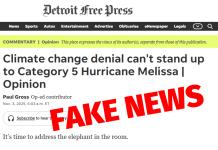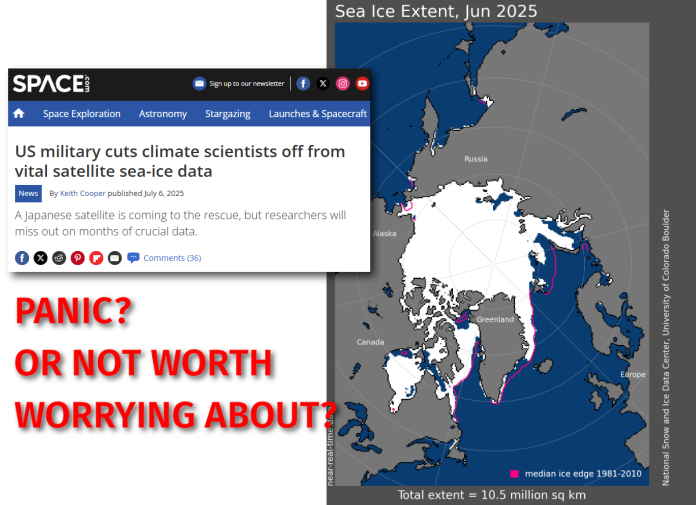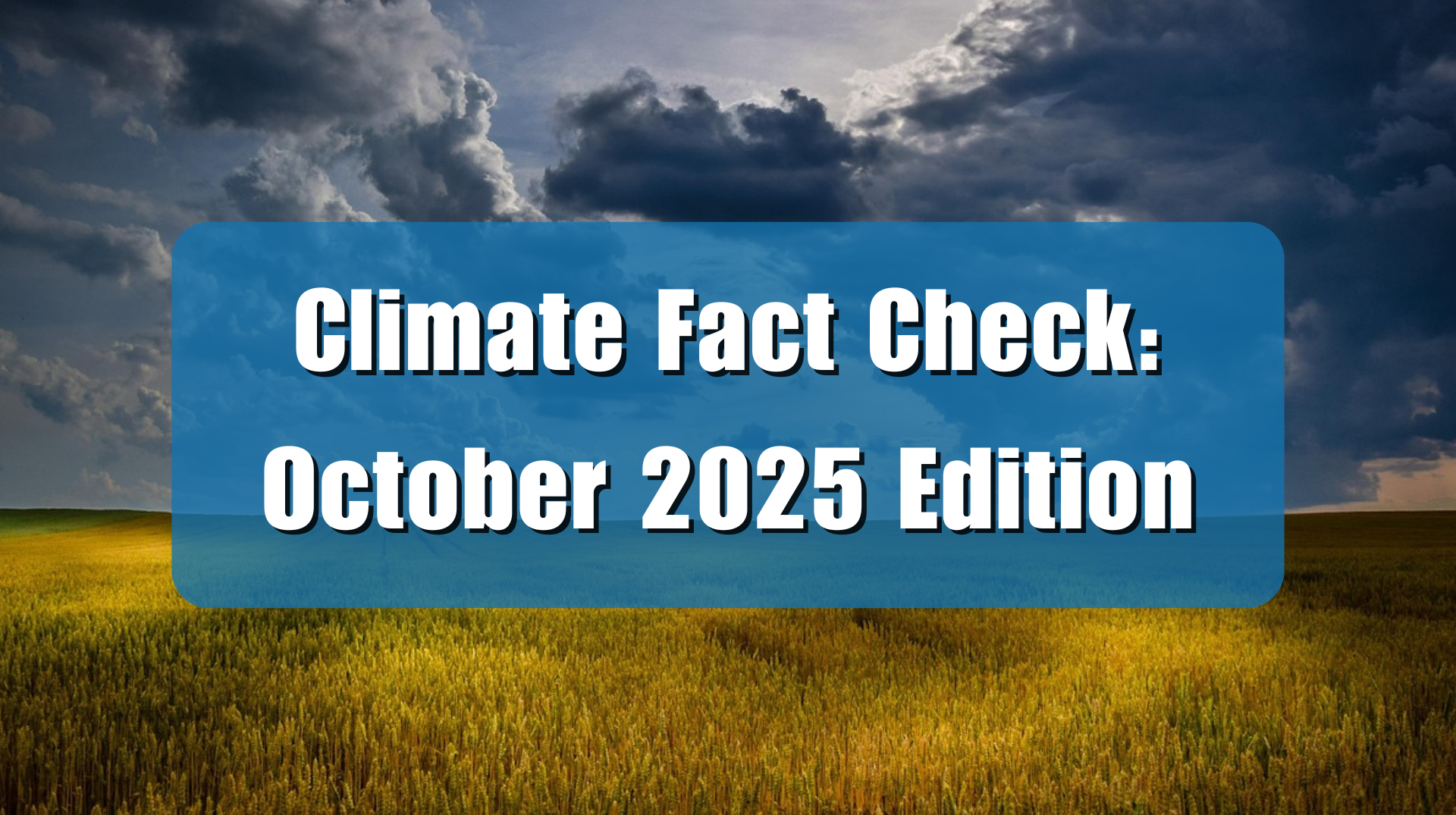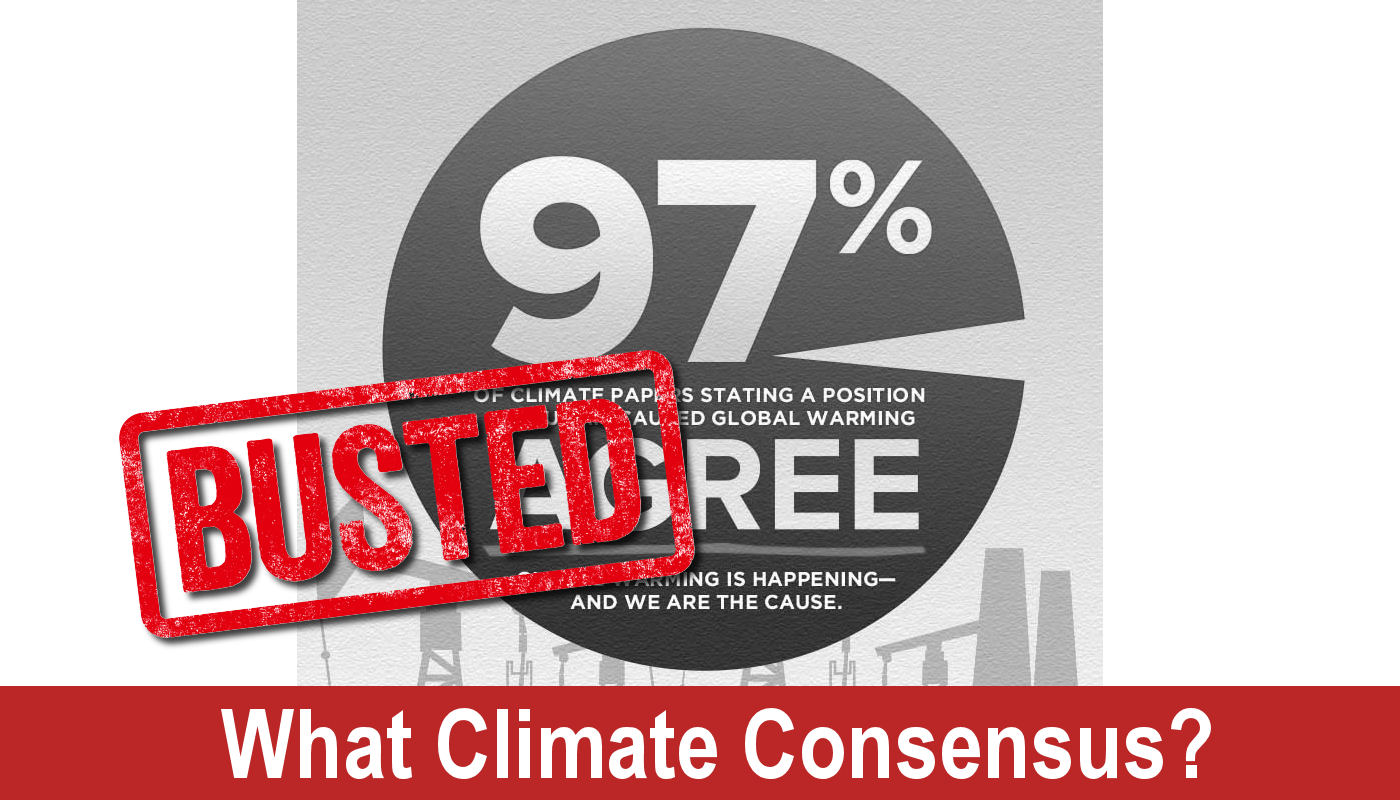The recent Space.com article, dated July 10, 2025, titled “US military cuts climate scientists off from vital satellite sea-ice data,” makes the false case for panic about the loss of data from the Special Sensor Microwave Imager/Sounder (SSMIS) operated by the Department of Defense.
Saying, “The changes are the latest attacks by the U.S. government on science and the funding of scientific research in an effort to slash the budget to enable tax cuts elsewhere,” Space.com sets the stage for some malevolent action where there is none.
The Space.com piece details how the National Snow and Ice Data Center (NSIDC) at the University of Colorado, Boulder, will lose access to SSMIS data, which tracks sea ice coverage. The article paints this as a devastating blow, tying sea ice loss to catastrophic glacier melting and sea level rise, while also admitting to commercial benefits like shorter shipping routes.
It also admits that NSIDC plants to pivot to Japan’s Advanced Microwave Scanning Radiometer 2 (AMSR2) data, but frets about a temporary data gap. Their tone is predictably dire, framing the decision as part of a broader attack on science, with references to budget cuts, NASA mission threats, and evictions of scientific institutions (like GISS).
The article insists the cuts blind scientists to a critical climate indicator, but let’s take a step back and examine why this might not be a catastrophe, and why sea ice data, in the grand scheme, isn’t the climate change proxy it’s cracked up to be.
Sea ice has long-been a poster child for climate alarmism, but as we’ve discussed extensively at Climate Realism, and Climate at a Glance here, here, and here, it’s a flawed and noisy proxy for climate change. First off, Arctic sea ice, while lower than its 1979-2000 average, has not vanished as predicted. Since the notable low in 2007, Arctic sea ice extent has stabilized at a new, lower plateau, fluctuating year to year but showing no consistent downward spiral toward an “ice-free Arctic” summer, as seen in Figure 1 below.

This stabilization is despite endless model-based forecasts and dire predictions from Al Gore.
For example, Arctic sea ice has remained stable for nearly 20 years. Meanwhile, Antarctic sea ice tells an even more inconvenient story. Contrary to models predicting ice loss in a warming world, Antarctic sea ice has shown periods of growth, particularly in recent years. Further, in 2014, Antarctic sea ice reached a new record high extent. This growth directly contradicts the narrative that a warmer planet universally melts sea ice, exposing the oversimplification of tying ice extent to global temperature.
But even worse, as has been pointed out at Climate at a Glance, even the losses of Antarctic ice are insignificant in the much bigger picture of total ice in Antarctica.

Graphs originally by Willis Eshenbach, adapted and annotated by Anthony Watts.
Why is sea ice such a shaky climate proxy?
As we’ve long argued, it’s influenced by far more than just temperature. Wind patterns, ocean currents, and natural variability like the Arctic Oscillation play massive roles. For instance, note how changes in wind patterns affect Antarctic sea ice. In Antarctica, changes in atmospheric circulation, not just temperature, drive ice variability. Add to that the fact that sea ice data is riddled with measurement challenges: sensor calibration issues, satellite drift, and algorithm tweaks can all skew results. The Space.com article’s claim that losing SSMIS data blinds us to climate change ignores these complexities and assumes sea ice is a straightforward barometer of climate change, which it’s not.
Tracking daily sea ice provides, at best, a rough indication of what’s happening in the polar regions, heavily filtered by natural variability and technical limitations. For actual climate science, this metric tells us less about the climate than about the limitations of our models and the persistent urge to find a simple answer to a complex system. The scientific value is, therefore, minimal—especially when compared to the breathless importance often assigned to it.
Moreover, the article’s panic over a temporary data gap is ironic, especially given NSIDC’s history of downplaying data issues when it suits them. Back in 2009, WattsUpWithThat.com wrote about a significant data loss at NSIDC due to a catastrophic sensor failure on their satellite, leading to erroneous data and a gap in records. NSIDC’s Walt Meier dismissed it in comments as “not worth blogging about.” You can read the details in the article, “George Will’s battle with hotheaded ice alarmists”, where the hypocrisy was highlighted. Funny how a data gap was no big deal then, but now a similar issue is framed as apocalyptic.
This selective outrage undermines NSIDC’s credibility and highlights the politicized nature of their narrative. Expanding on the article’s premise, the loss of SSMIS data isn’t particularly crippling for climate science because sea ice data, in the context described, has limited utility. It’s a noisy, multifaceted metric that doesn’t directly correlate with global warming or CO2 levels. Other datasets—like global temperature records, ocean heat content, or even alternative satellite sources like AMSR2—provide more robust insights.
The article’s claim that sea ice is a “significant measure of climate change” overstates its importance, ignoring how natural variability and non-climatic factors muddy the signal. If anything, the DoD’s decision to prioritize military needs over feeding an alarmist narrative might force scientists to focus on more reliable metrics.
The DoD has its own priorities—ship deployments, national security—and isn’t obligated to subsidize NSIDC’s research. The pivot to AMSR2, while requiring calibration, isn’t insurmountable; Japan’s data is already available and comparable. The article’s fearmongering about a “blind spot” ignores that climate science has never relied solely on one dataset. So perhaps a pause in data will prompt a reevaluation of these flawed predictions. Also, check coverage where models are shown failing on sea ice predictions.
In short, the Space.com article is another example of climate alarmism without factual basis. Sea ice isn’t the climate oracle it’s made out to be, and the loss of SSMIS data is more inconvenience than catastrophe. Arctic ice has stabilized, Antarctic ice has grown, and natural variability trumps simplistic model narratives. As we’ve said for years at Climate Realism, the climate story is far more complex than the headlines suggest. NSIDC’s past dismissal of data gaps, as noted in 2009, only underscores the selective hysteria at play here. Time to move on to better metrics and less dogma.






















